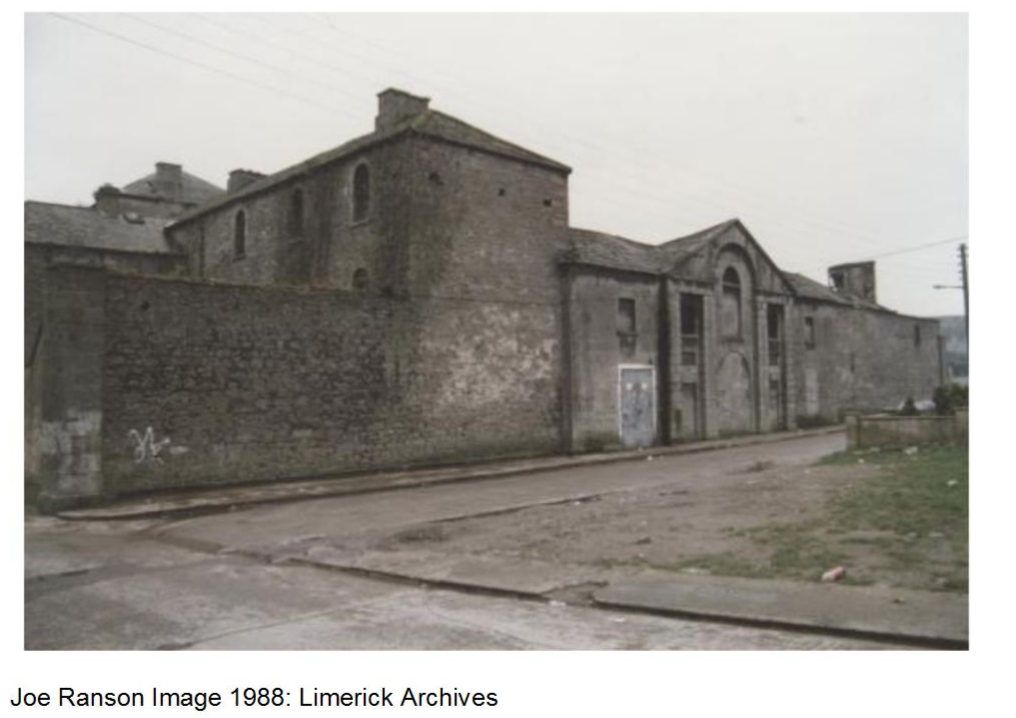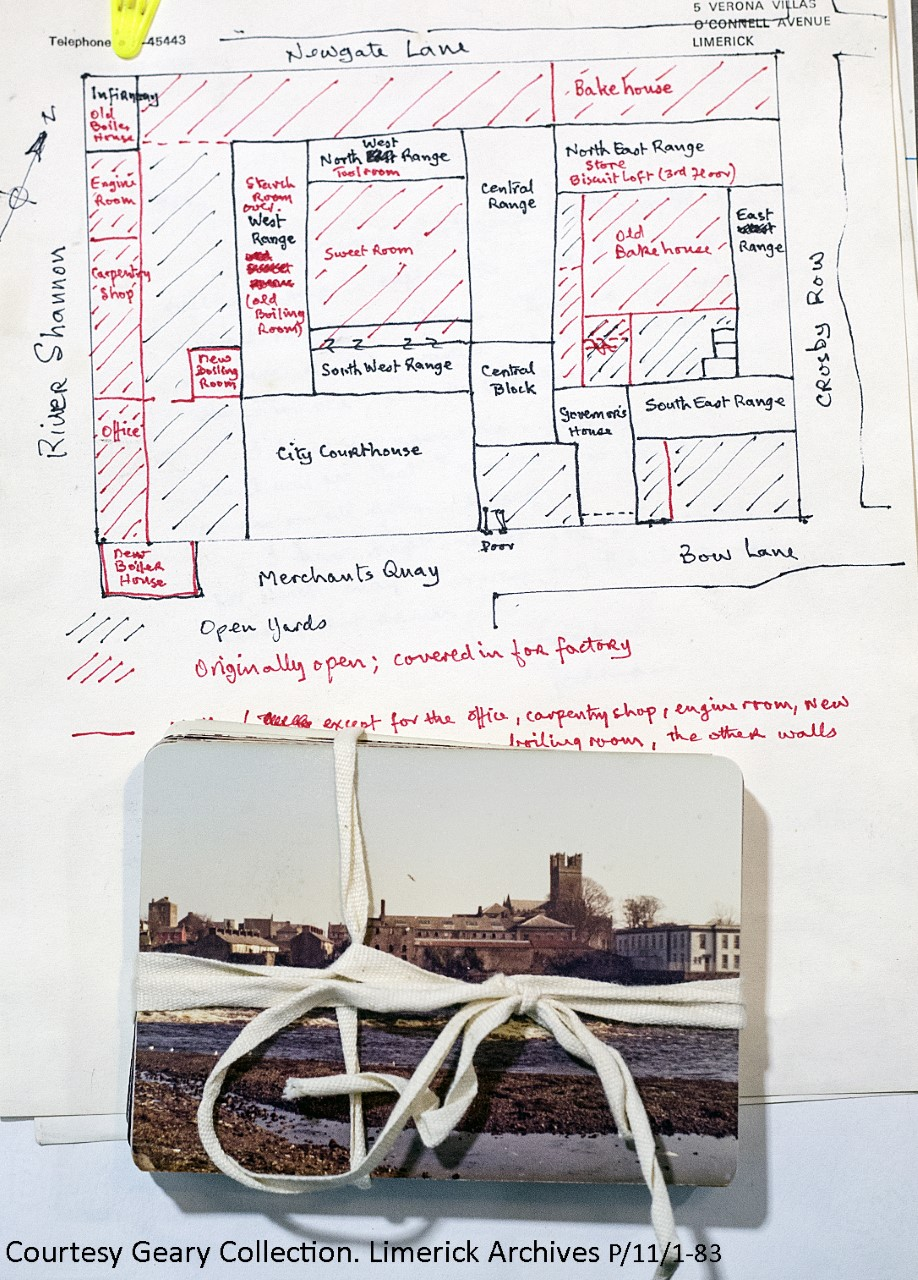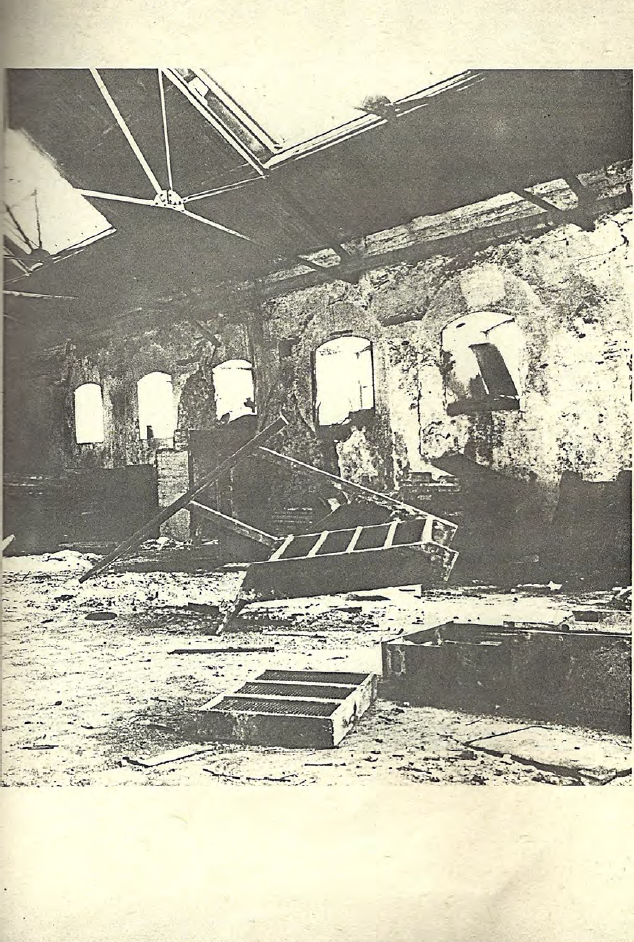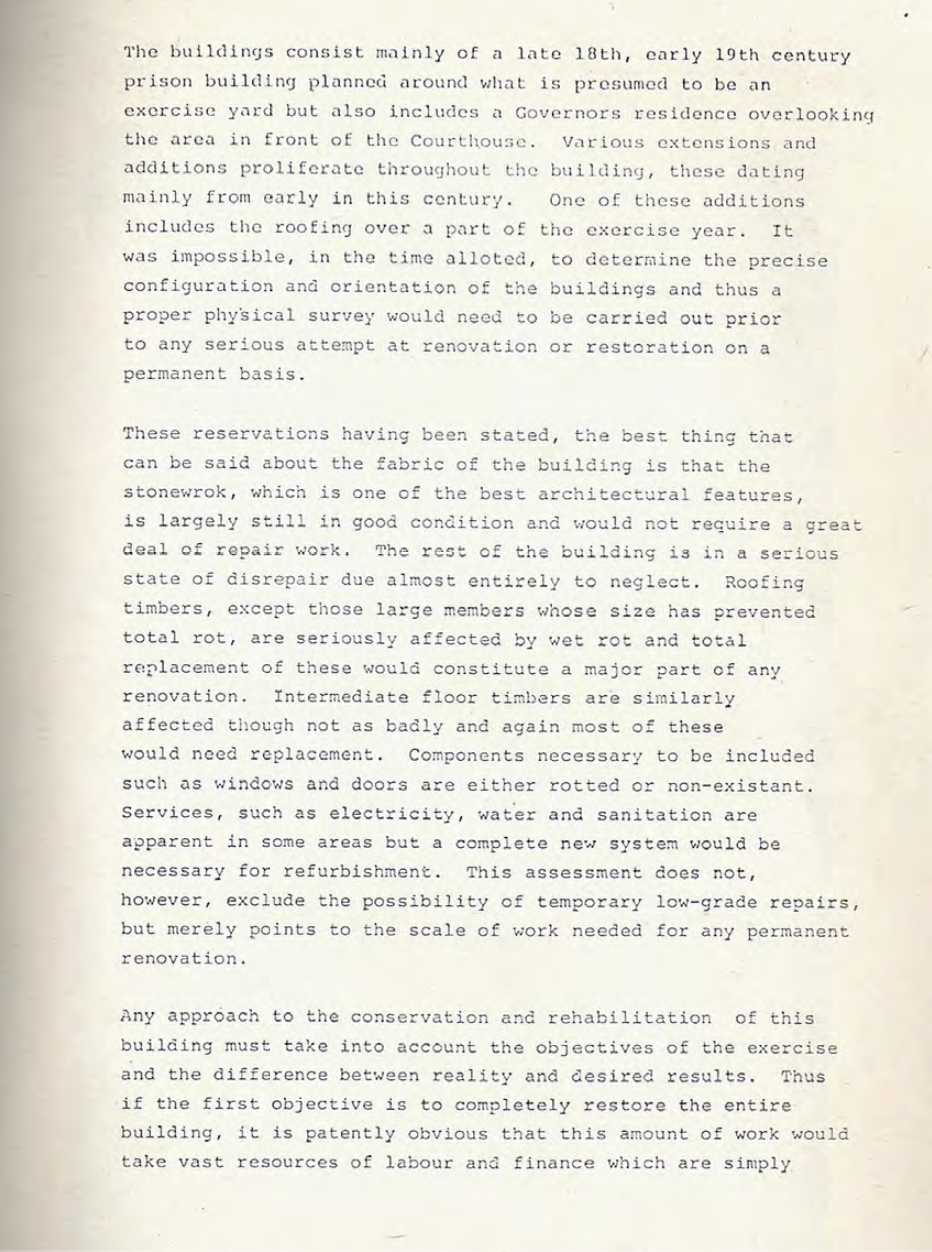Prisons turned into art spaces and closed again #1
Limerick, Ireland
Anastasia Artemeva
Many thanks to Andrew Kearney and Deirdre Power
На русском языке
Some governments close prisons because of the centralisation and improving of the conditions. Some countries have achieved such low crime rates, that spaces of incarceration are no longer needed. Some places opt for creating large industrial complexes. Victorian red brick beauties as well as the brutalist giants from the 1980’s are no longer needed. Some are knocked down, some remain silent monuments to architectural achievements, some are repurposed.
One of the new functions of the spaces of compulsory confinement is museums, art exhibition spaces and studios. It can be said that the architecture itself already invites such a response as prisons and museums have similarities both in design and in function, both made to be holding, containing somebody or something.
 View from the prison building onto the river Shannon. Andrew Kearney, 1983/84.
View from the prison building onto the river Shannon. Andrew Kearney, 1983/84.Image courtesey of Andrew Kearney.
Prison Space will publish a series of notes on such spaces. This selection of prisons turned art spaces covers a variety of realised and proposed projects that make former prisons into spaces for arts. What unites them, as this is only a short list of such, is that their role as an art space hasn’t lasted. They gave way to housing, local government buildings, or standing idle waiting for an investor. In these articles we attempt to analyse what can be done to a space once its original function has ceased. We look at methodologies used to give these former places of suffering a new purpose and a new context. The temporality of the projects does not reflect on their success. These played a significant role in activating the spaces, and uniting the stakeholders through it’s brisk action. What is the meaning of a prison building within the local and global history and social geography.
First stop is Debtor’s prison in Limerick, Ireland. Limerick is a city in the West of Ireland, located on the River Shannon, where the river widens before it reaches the Atlantic Ocean. Founded by vikings, and ran subsequently by waves of invading normans and anglos-saxons, the city has an industrial working-class history and a rich cultural heritage.
 Material sourced by Deirdre Power from the Limerick City Archives on the later history of the building as a biscuit & sweet factory. The documents & photographs were compiled by the last of the Geary family.
Material sourced by Deirdre Power from the Limerick City Archives on the later history of the building as a biscuit & sweet factory. The documents & photographs were compiled by the last of the Geary family. At the time of construction of the prison - in the late 18th century/early 19th century Ireland was under the British rule, and its penal practices reflected those in the United Kingdom. Severe laws allowed for capital and corporal punishment, as well as shipment of prisoners to penal colonies in America, Australia to name a few. When this practice was being abolished and prison reform was under development, new places to detain arrested persons were needed. New correctional facilities were designed, essentially similar to the ones that are used today.
 Material sourced by Deirdre Power from the Limerick City Archives on the later history of the building as a biscuit & sweet factory. The documents & photographs were compiled by the last of the Geary family.
Material sourced by Deirdre Power from the Limerick City Archives on the later history of the building as a biscuit & sweet factory. The documents & photographs were compiled by the last of the Geary family. The building constructed on the bank of the river Shannon in the early 19th centry was used as a Debtor’s and Women’s prison - a place of incarceration not for criminals as such, but for people who were not able to pay their debts. Failure to pay even a small sum could result in imprisonment, not only for the persons in question but also for their families. Moreover, the incarcerated person was obliged to pay fees to prison officials, often significantly higher than the original debt itself, which resulted in even longer sentences.
Timeline :
1813: The prison building was complete, with a stage for executions at its front.
1902: The building was repurposed as Geary’s Biscuit factory, operated in the premises on Merchant’s Quay.
1922: Irish Free State is created, marking the process of formation of the Republic of Ireland.
1982: The factory closes.
1984: A group of students from Limerick School of Art and Design proposed to turn Limerick Debtors & Women’s prison into a new art space, creating a “center for visual and performing arts”. Their aim was to provide working and exhibition spaces for recent graduates, and provide better connections with the public, particularly with school students. Visual artists Deirdre Power and Andrew Keirney shared their experiences in negotiating with the then Limerick Corporation, now Limerick City & County Council to convert the disused prison into an art and creative space. Andrew Kearney documented the building in 1983/84 and recorded among others drawings scratched on the walls of the cells that look like they were done in the 20's during the civil war in Ireland as it's of armoured tanks in the streets as kids play around them ( the drawings were executed by one of the daughters of Geary’s, who ran the factory - Limerick City Archives).


All + 10 Sorts Acrhive Artists Collective Limerick
Proposal and a report from arhitect Brian Thompson.
Their proposal was denied. Nonetheless, the collective re-grouped, determined to find suitable space to work. They met with Jack Ormston, of Ormston Supermarket and negotiated a yearly renta over head the top floor of the Ormston supermarket, No 9,10 & 11 Patrick Street, Limerick. This was the first artist-led space, supported by The Arts Council of Ireland, outside the capital, Dublin.
1988: The prison building was demolished.
1990: City Hall completed on the vacant space. Parts of the existing structure including the underwater drains and quays can be seen outside city hall on the riverside. The original entrance/facade to the prison is visible from outside street, Crosbie Row.
2015: The artist collective - All + 10 Sorts group’s proposal from 1984 was revisited with the archive exhibited to the public through the Third Bridge exhibition in Ormston House. Ormston House is a cultural resource center established in the former supermarket.

Material sourced by Deirdre Power from the Limerick City Archives on the later history of the building as a biscuit & sweet factory. The documents & photographs were compiled by the last of the Geary family.
Further reading:
ALL + 10 SORTS ARCHIVE ARTIST COLLECTIVE LIMERICK 1983 Proposal
Third Bridge (1983/2015) archival project/exhibition by Andrew Kearney and Deirdre Power
21 August - 18 September 2015, Ormston House Cultural Resource Center, Limerick, Ireland.
Third Bridge Publication. Accompanying the exhibition, the artists have produced an 8-page newspaper publication which includes archival documentation of the project in 1983, a text and timeline by historian Prof. John Logan, and related newspaper articles.
http://ormstonhouse.com/programme/third-bridge-1983-2015-andrew-kearney-deirdre-power/
Eurostat https://ec.europa.eu/eurostat/web/crime/overview
Day, J., Corrections and collections. Architectures for art and crime, Routledge, 2013
B. Henry, Dublin Hanged: crime, law enforcement and punishment in late eighteenth-century Dublin, 1994
https://www.historyireland.com/18th-19th-century-history/prison-reform-in-ireland-in-the-age-of-enlightenment/
Limerick Chronicle, Sat 20th, 1969 http://www.limerickcity.ie/media/pris008.pdf
